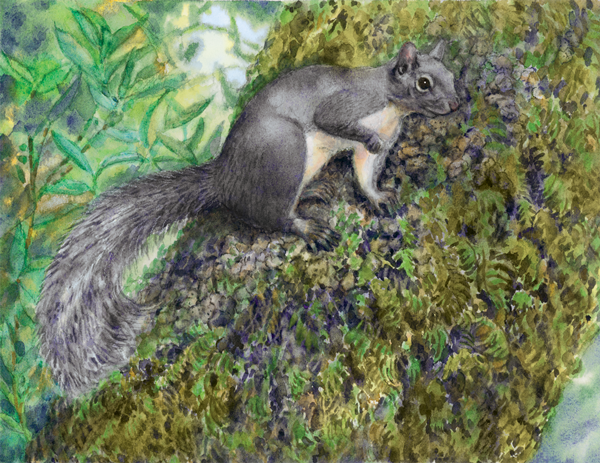
Secrets of the Oak Woodlands: Plants and Animals among California’s Oaks
by Kate Marianchild
Excerpts from the western gray squirrel chapter
When you see swaying branches high in the oak canopy on a windless fall day, prepare to watch heart-stopping acrobatics. A western gray squirrel may be bounding from branch to branch sixty or eighty feet overhead. These daring gymnasts sometimes leap across twenty-foot chasms to land on finger-sized twigs that careen wildly under their weight and occasionally break. Other times the graceful athletes seem to float through the treetops, shining tails undulating like waves behind them. (p. 161)
Marvelous multipurpose tails
The tails of western gray squirrels serve at least eleven purposes, probably more. When one of these trapeze artists falls out of a tree (a rare but not unheard-of event), it uses its tail as a parachute. Then, just before hitting the ground, it flips its tail under its body to cushion the fall! When you see a squirrel crouching on a branch, tail curled over its body, it may be using the tail as a blanket, sunshade, umbrella, or camouflage device, depending on weather or the presence of an aerial predator. The tail camouflages the squirrel by reflecting light from every hair, making it difficult for a hawk or eagle to see the outline of its prey. (p. 165-166.)
